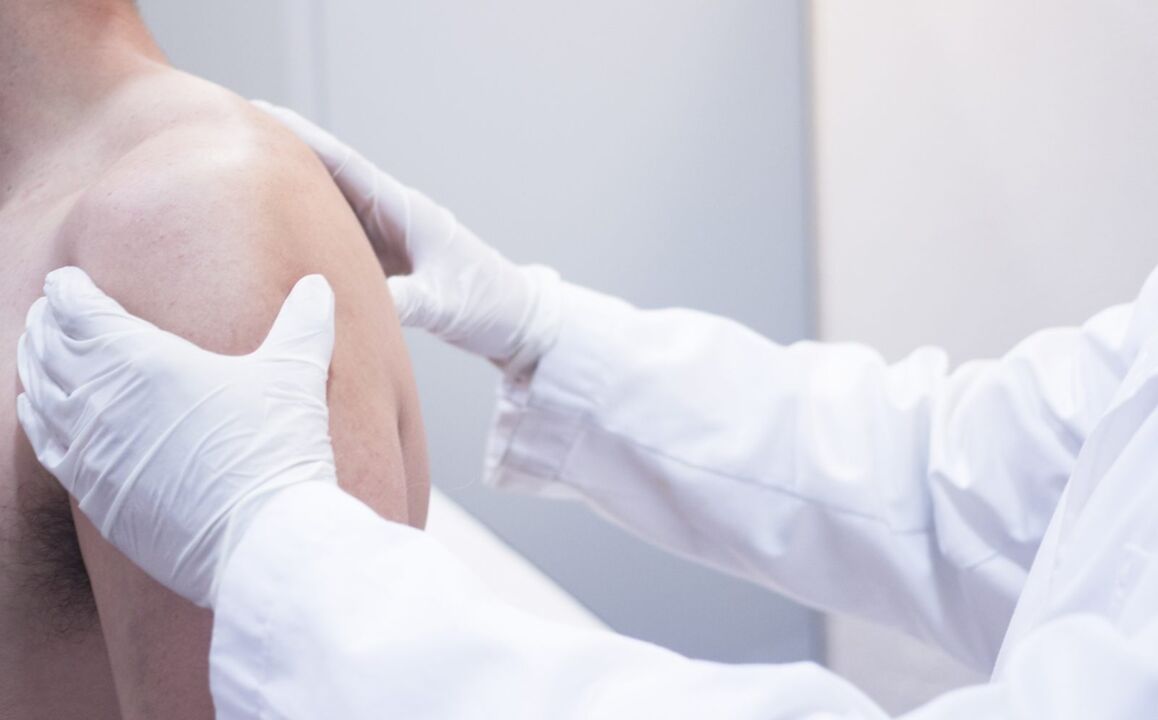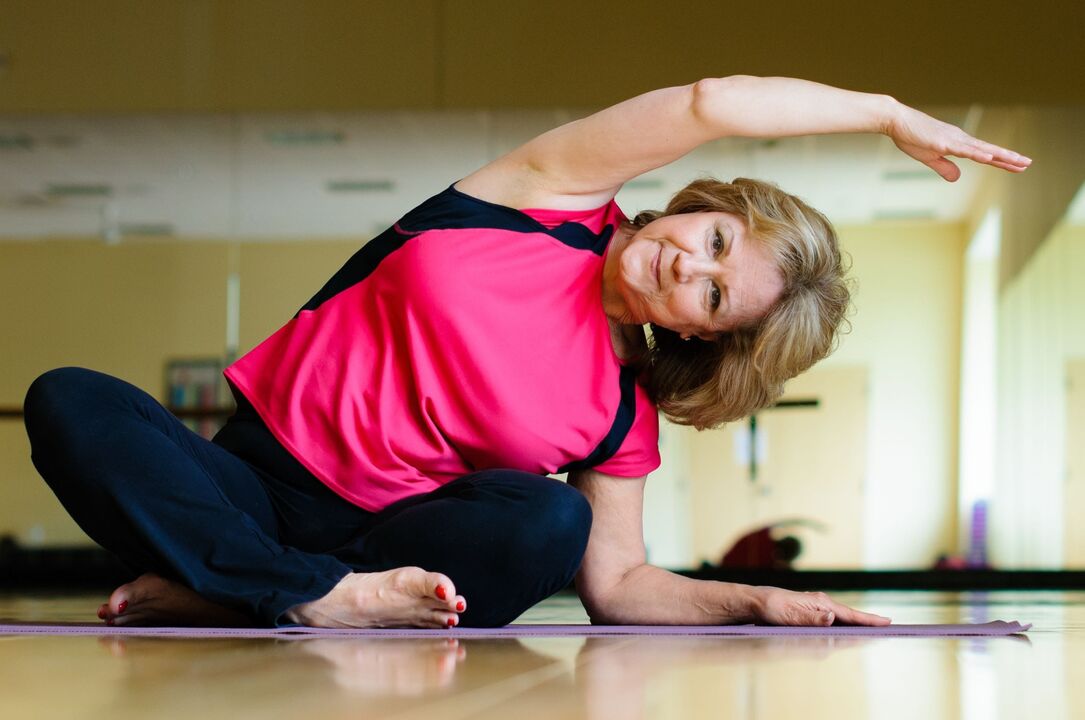
Shoulder problems are not as common as hip or knee problems, but they do exist, and among them, notably osteoarthritis, the symptoms and treatment are unique. In most cases, a rheumatologist will deal with these problems. In general, osteoarthritis of the shoulder has its own unique symptoms and is characterized by a degenerative process not only in the cartilage itself. Very often, cysts, ligamentous apparatus and articular sacs are damaged, of which there are many.
As a result of all that, the joint becomes deformed, the range of motion is limited. In addition to the fact that such a condition develops, arthrosis is accompanied by pain. The reasons for this condition can be very diverse, we will try to understand them in detail.
What makes it all happen
The inflammatory process leads to the resultant fibrosis of the shoulder joint. It develops due to a variety of factors, some of which are battled by a rheumatologist and some that will require the help of a traumatologist.
The most common cause of osteoarthritis is trauma. This is observed in athletes as a result of minor trauma, during a routine dislocation or after a fracture. At that time, the dryness of the joints is post-traumatic and requires its own treatment.
With pathology of blood vessels, tissues experience a lack of oxygen, tissue dystrophy occurs. The result is the development of arthritis of both the right and left shoulder joints. Often this condition can be observed with excessive exertion.
Often, the reason lies in hormonal disruption or autoimmune damage to cartilage. In the second case, a rheumatologist addressed such shoulder arthritis. Arthritis occurs, for example, with psoriasis, gout.
It's believable that the cause may be hidden genetics, especially if a parent has the condition. In addition, arthropathy can develop in people with congenital defects of the shoulder joint.
Symptoms can also appear with age, as cartilage wears down. At risk are people over the age of 50.

Symptom
Shoulder osteoarthritis develops over a long period of time, and its symptoms do not go away on their own. In this regard, you need to constantly monitor the condition of the shoulder joint and if symptoms appear even mild, immediately consult a doctor.
It all starts with pain, the first manifestation is joint disease. Aching joints, especially in the morning or when the weather changes. When lifting weights, this symptom also makes you feel active, often the shoulder area cannot even be touched. As symptoms progress, joint disease appears even at rest. In addition to joint pain, symptoms may be in the back, forearm, or elbow.
Symptoms are supplemented by restriction of movement, the main reason for this pain lies in that. A normal person cannot perform simple actions, such as brushing or flossing.
The simulated scratching test allows you to find out the presence of dry joints.
It is also difficult to withdraw. If drugs and gymnastics are not prescribed on time, a contract is inevitable.
Additional crunching symptoms, which can appear to any degree. It occurs due to the growth of bone tissue, and in the early stages it is felt only by the person himself, and then one hears it even at a distance. The blisters are involved and not only the joints, but also the shoulders, forearms, and the skin may turn red. All this indicates the presence of an inflammatory process.

In the late stages of the disease, bending the arm to the side becomes a problem. This occurs due to multiple growths covering the joint area. There are some specificities depending on the degree - at each stage, the disease can manifest in different ways.
Depends on the level
In the early stages of the disease, the pain appears only in the morning and evening. It can take time for a person to come out of "stiffness". A strong movement accompanied by a soft crackling, this is not the cause of pain.
At rest with this level, there is no pain as shown on the x-ray with no changes. It all started in grade 2, when the symptoms became more and more pronounced.
Symptoms in the second stage are supplemented by more pronounced cries and pain. Full arm movement is no longer possible, however, joint mobility is preserved. At this stage, the destruction and deformation of cartilage occurs, which has characteristic manifestations on radiographs.
At the third degree, the process can be considered running, and drug treatment has achieved minimal success. In this case, only slight swaying movements can be performed and the sharp pain becomes a constant companion. The joint area is very severely inflamed, deformed, and painful in the shoulder and forearm joints. Therefore, post-traumatic arthropathy is most often manifested, possibly in the area of \u200b\u200 right or left shoulder joint.

If you do not perform special exercises, the muscles will atrophy. Only surgical treatment can help in this case. However, it rarely reaches this stage, only in case of continuous overload.
With the fourth degree, it is not necessary to talk about the joint, as such, because it simply does not exist. Post-traumatic arthritis leads to this condition, especially if the injury is severe. Medicines, even strong ones, are not able to cope with the pain. You may experience this stage in the elderly and elderly. The pain often radiates to the forearm and only proper treatment can help.
The treatment
There are special drugs that can stop the disease. The main thing is to prescribe treatment with them as soon as possible, even if the arthrosis is post-traumatic.
Drugs
The first is a non-steroidal anti-inflammatory drug. There are a large number of them, and only a doctor can choose the right one. In addition to reducing pain, the inflammatory process is also eliminated. Treatment with these drugs is carried out in waves, otherwise the effect on the cartilage can be negative.
In addition, the drug has an adverse effect on the gastric mucosa. With caution, they are indicated for people who have problems with this body. Long-term use may cause ulcers.

Local treatment
With a strong inflammatory process, drugs based on hormones are injected into the joint. The drug has a local anti-inflammatory effect, however, this is not safe for joints because it destroys cartilage. It is reasonable to use topical ointments, which also provide effective pain relief.
The program is supplemented by drugs called chondroprotectors. It takes a long time to treat the disease with these drugs, but they contribute to the restoration of cartilage tissue and normal function of the joints. Ingredients include glucosamine, chondroitin sulfate and hyaluronic acid. The effect continues for a long time, even after the drug has been stopped.
Physiotherapy and gymnastics
There are many techniques that practically do not use drugs, but allow you to achieve excellent results. With this disease, treatment is carried out with the help of:
- acupuncture therapy;
- therapeutic baths;
- lasers;
- supersonic;
- dirt.
In parallel, special exercises are performed to increase the range of motion of the joints. Gymnastics has a variety of techniques that are indicated according to the degree and stage of the disease.

It is best to perform exercises under the supervision of an experienced doctor, who will choose the optimal ones.
Work
When exercise and drug treatment do not help, surgery is necessary. Shoulder arthroplasty can solve the problem. They completely replace everything old and worn, the prosthesis itself is made of metal or ceramic. The lifespan of such implants is about 15 to 25 years.
To treat this disease is difficult and not always possible. Success is achieved only with an integrated approach, where treatment includes complementary drugs with gymnastics or special exercises, physiotherapy. Especially worried about the disease in the right shoulder, since this is the working hand.
It is better to treat the disease in its early stages and not to take it too lightly. If the joints are treated at an early stage, many negative consequences can be avoided. But do not self-treat this disease.


































